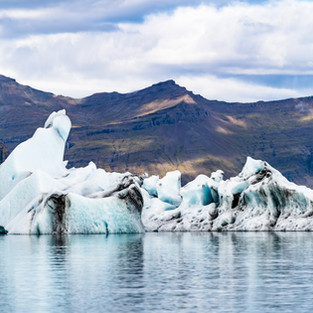
We know that it can be hard to find time to stop and think about the environmental impact of our Christmas activities and purchases but it is well worth the extra effort. Not only has there never been a more pressing time to do so, but, by making sustainable choices, it can also save you and your family money.
We understand that everyone is at a different stage of their eco-friendly journey so this guide includes a range of tips and ideas ranging from straightforward to more complex. If everyone makes just one extra sustainable decision this Christmas, then collectively, it all adds up to a big difference.
We also completely understand that not all sustainable decisions are feasible for everyone and this guide should be read as just that, a guide, and it is for you and your family to decide which, if any, sustainable actions you are willing and able to take. What matters is, you are here and you are willing to learn more about how you might reduce your environmental impact either now or in the future.
Christmas Trees – should you fake it or buy the real deal?
We have seen some interesting debates recently about whether fake or real trees are better for the environment so we thought we would do some research to see if we can resolve this argument once for all. It turns out, the internet is awash with claims and counterclaims but we found some data that seemed to cut through the noise.
The size of your footprint matters!
Let’s start with the Artificial tree.
According to the Carbon Trust, if you were to buy a 6-foot tall artificial Christmas tree, it would have a carbon footprint of around 40kg of CO2e. After it has fulfilled its useful life, it will inevitably end up in landfill where it would take hundreds of years to decompose. A fake tree uses an energy-intensive process during their production and are typically made from a petroleum-based plastic-like PVC.
Based on carbon footprint alone, you would need to re-use an artificial tree for at least 10 festive seasons to have a lower environmental impact than that of a real tree.
It isn’t just the impact of plastic we should consider though and there are some widely overlooked and less-known factors that should also be considered.
Several studies have shown that artificial Christmas trees also contain lead which is used to help stabilise the PVC. Over time, this lead can start to break down and form into a dust. It is unclear how much risk this lead dust can pose to the health of humans and pets over the years but the risks from lead, in general, are well known. The World Health Organisation say that:
Lead is a cumulative toxicant that affects multiple body systems and is particularly harmful to young children.
Lead in the body is distributed to the brain, liver, kidney and bones. It is stored in the teeth and bones, where it accumulates over time. Human exposure is usually assessed through the measurement of lead in blood.
Lead in bone is released into blood during pregnancy and becomes a source of exposure to the developing fetus.
There is no level of exposure to lead that is known to be without harmful effects.
It isn’t always easy to tell if a tree contains lead but always check the label and consult the manufacturer if you have concerns.
The human impact of artificial trees is also important to think about. Although factory conditions in the UK and Europe are well regulated, the majority of our fake Christmas trees are made in China which is known as the factory of the world for good reason.

While it is not clear what the working conditions are like for the factory employees, we do know that China does not have a great reputation for protecting its worker's rights and health. We also know that the use of petroleum and lead based products can pose a risk to human health and the environment if not handled and disposed of safely. In the absence of definitive clarity on working conditions for Christmas tree makers, it is for you to decide if you think the desire for artificial Christmas trees outweighs any potential harm for the factory workers and any environmental impacts involved or affected during their production.
Let's see how artificial trees compare to real ones.
The environmental impact of a real tree depends primarily on how you dispose of it after Christmas.

Let’s say that you buy a 6ft real tree, without roots, that you dispose of at landfill after the festive season. According to the Carbon Trust, this tree will have a carbon footprint of around 16kg CO2e
Yet, the same size real tree that is either burned or turned into wood chips, has a carbon footprint that is reduced by up to 80% to around 3.5kg CO2e.
This is because a real tree that has been disposed of at landfill releases methane gas as it decomposes which is 25 times more potent as a greenhouse gas than carbon dioxide.
Further, if you buy a 6ft real tree that you plant once the festive season is over, not only is it’s carbon footprint around 3.5kg CO2e, but it also acts as a carbon sink for years to come and becomes carbon neutral over time.
Purchasing a locally grown Christmas tree also reduces your environmental impact compared to ones that have been shipped around the world. It is also worth remembering that Christmas trees are often farmed on land that is unsuitable for anything else and during their typical 7 year period, act as carbon sinks extracting CO2 from our atmosphere and producing oxygen. These tree farms can also provide important habitats for native species and as tree’s are harvested, new ones are planted.

We understand that the choice of Christmas tree is often only in part about its environmental impact. Space in your home, how easy or difficult it is to source a real tree, whether you have a garden space big enough to plant a real tree and costs are all key parts of the decision-making process.
But in terms of the trees environmental impact at Christmas, we hope this helps make it clearer.
If you are looking to buy an artificial tree this year, consider buying a second-hand one or one that has been produced in the UK, by a UK company that is lead-free. (if in doubt, check with the manufacturers)
But, do you really need a tree at all? Yes, a pine tree is all very festive, but places like Pinterest are filled with alternative Christmas tree and decoration ideas including ones made from decorated house plants, recycled baubles, and even succulent plants trained to grow in a cone-like shape!
Take a look at our Pinterest page for Pin'spiration https://www.pinterest.co.uk/thegreengreyhound
Sustainable Christmas gifts
We’ve all done it. We’ve all been seduced by the carefully crafted marketing stands near the entrance to a store that seduce you into buying that impulse gift. That gift which, in the cold light of day, will most likely never get used or last for 5 minutes as a novelty.
So before you head out to do your Christmas shopping, you need to read this!
In the UK alone, we create over 30% more waste than usual during the festive period.
Each year, UK consumers spend around £700 million on unwanted presents
Recent surveys suggest that around 28% of UK families admit to throwing out perfectly good toys each year that ends up in landfill.
In 2017, an estimated 114,000 tonnes of plastic packaging would be thrown away in the UK and not recycled at Christmas.
The UK uses around 100 million rolls of wrapping paper each Christmas which is roughly 227,000 miles in length or enough to wrap the equator 9 times. Most of this paper cannot be recycled due to the glitter print and Sellotape additions.
DEFRA estimate that around 50,000 trees are cut down each year to make enough paper to wrap our presents.
A report by the Telegraph found that families spent up to £800 on average on their Christmas gift shopping.
That’s a lot of unnecessary waste. So what can we do?
You should plan ahead to reduce your chances of being lured by those shiny and festive impulse buys in store. Think about who you really need to buy for and what they would really like.
Think about the size of your eco-footprint. Consider how much plastic, particularly single-use plastic that the product contains, and how many toxic chemicals are on an ingredient list. Think about why that funny Christmas jumper only costs £10!
Small home-made gifts like cookies or other handcrafted items can mean so much more to the recipient than a mass-produced gift and they often don’t take too much time to prepare. Places like Pinterest are awash with homemade gift ideas.
Take a look at our Pinterest page for Pin'spiration https://www.pinterest.co.uk/thegreengreyhound
Buy local and UK made products from small businesses as much as possible. Every time you buy from a small business, someone somewhere does a happy dance.
Consider shopping from one of many specialist eco-friendly stores that only stock natural, eco-friendly and sustainable gifts and products.
You can plan ahead with family and friends and either decide to ditch the gifts altogether or form a secret Santa – where each family member or friend pulls one name from the hat to buy for. That way, everyone gets one well considered present and saves time, money and reduces waste at the same time.
Consider buying environmentally-friendly wrapping paper that is recycled and biodegradable or even re-use some fabric to wrap gifts in instead. Swap the plastic Sellotape for plastic-free equivalents and consider sending e-cards or ditching them altogether in favour of donating what you would usually spend on cards to a local charity.
Recycle delivery boxes or packaging as much as is practical. If some items require to be recycled in specialist refuse sites, consider collaborating with friends, family and neighbours to reduce the number of trips required to dispose of it.
Normalise second-hand goods. Most of us already know that kids prefer the boxes anyway and that they get bored and grow, fast! This leads to many toys in great condition being sold on local selling sites or donated to charity shops. These toys make for excellent gifts that can be re-donated once your child has inevitably got bored or outgrown these too! Many other gifts can be found in charity shops and re-selling sites and these shouldn’t be overlooked.
Take a look at our Pinterest page for Pin'spiration https://www.pinterest.co.uk/thegreengreyhound
Christmas food
We have heard it said that blog posts like these are ‘teaching granny how to suck eggs’ but the astonishing truth is, nearly one-third of the UK population – that’s around 22 million people - admit to binning food simply because they don’t know what to do with it, or how to store it safely.
In 2019, the baker Warburtons published a study into food waste which concluded that at Christmas time, on average, UK households throw away 130m sprouts, 91m slices of turkey, 93m roast potatoes, 85m helpings of stuffing, 82m parsnips, 77m pigs in blankets, 5m Christmas puddings, 74m million mince pies and an Olympic sized swimming pool of gravy!
It concluded that the average family bought enough food to feed an extra 3 people!

Worse still, this is just the food waste generated from our Christmas meal and this study made no calculation of the plastic wrapping that was created for that food that was destined to end up in landfill or the emissions generated from creating it.
A report by WRAP.org.uk in 2018 concluded that household food waste is a big problem all year round. Some key takeaway points from this report include:
Of the 66 million tonnes of household food thrown away in 2018, almost three-quarters of it could have been eaten.
A UK household wastes on average the equivalent of eight meals a week.
Food that could have been eaten but was binned instead, was worth around £14 billion pounds. This equates to around £60 per month for the average family with children (or £720 per year)
The carbon associated with this food waste is equivalent to the carbon generated by one in five cars on UK roads.
An area the size of Wales would be needed to produce the food and drink that is currently wasted.
So what can we do?
Spend some time thinking about the meals that will be needed by you and your family over Christmas and make a plan. This plan doesn’t need to be elaborate, fancy or onerous. You can make a plan by scribbling down meals on the back of an envelope or by downloading one of many free or paid apps to your phone that help you plan meals and shopping lists ahead of time (and an app means you are less likely to forget to take your shopping list with you to the store!) This plan should include options for using up leftovers.
Planning ahead is also highly recommended throughout the year and creating meal plans each week with shopping lists is a great way of reducing waste and food bills.
Check what food you already have in your cupboards, fridge or freezer and plan meals around using these up. Buy only what you need.

Organise your cupboards, fridge and freezer to be sure you can see what you have and make it less likely to waste those ingredients lurking at the back.
It is important that you don’t overfill your fridge. Things that need to be kept chilled typically have shorter shelf lives so it is important that you can easily see what you have and when it needs used by. A full fridge means food is often missed. It is also worth keeping in mind that a full fridge is less efficient and has to work harder to maintain an even temperature. If your fridge struggles to stay sufficiently chilled it can, in some cases, cause food to spoil early.
Be sure to properly cover and wrap leftovers before storing it safely, ideally using plastic free and re-usable products like wax wraps (or vegan alterantives), cotton or silicone covers or glass food storage containers.
Know the difference between use by and best before dates. Use by dates must be kept to, as eating the item after this date could, in the worst-case scenario, make you ill. Best before dates tell you when a product will begin to lose its freshness. For example, if you have bread that is now passed its best before date, it will start to become less fresh and wouldn’t make the best sandwiches but, it would make great toast or make a delicious batch of home-made bread and butter pudding for instance.
Many parts of the UK now offer a free doorstep food composting service. If you live in one of these areas, be sure to use it along with compostable food caddy bags of course! The aim is to compost as little food waste as possible though so this should mostly be used for peelings and other natural waste arising from preparing food. The aim is still to avoid food waste as much as possible.
If you find yourself with fresh food that you just won’t manage to use, check out the packaging to see if it can be frozen for later use. Even things like past-their-best bananas can be chopped up and frozen for later use in a home-baked banana loaf recipe. If in doubt, Google is your friend!
Save websites like https://www.lovefoodhatewaste.com/ or https://www.bbcgoodfood.com/recipes/collection/leftovers-recipes to your phone or desktop for recipe inspiration.
We have also added a few leftover recipes to our Pinterest page for inspiration. https://www.pinterest.co.uk/thegreengreyhound
So, why is all of this important?
Our consumer and capitalist society is most sharply bought into focus at Christmas time when many people think it is harmless to do everything in excess. Sadly, we are living through a period of unprecedented climate change and the belief we can ‘shop till we drop’ must end if we want our planet to be sustainable and healthy for our children, grandchildren and at-risk communities around the globe.
Excess Christmas consumption ultimately and simply put, leads to more products being manufactured and being sent to landfill needlessly. The more waste we send to landfill, the more methane and carbon dioxide (CO2) gets released into the air which in turn, increases the temperature of our planet. As this temperature rises, it increases the likely risk of natural disasters happening around the globe. Not to mention the effect on wildlife, our oceans and other eco-systems too!
Recent examples of extreme weather changes would be the forest fires in California in 2018 and the bush fires in Australia during 2019 and 2020. In Australia, a recent scientific study calculates that climate change increased the risk of Australian bush fires by a whopping 30%.
If everyone in the UK just makes one sustainable change this year, that would collectively add up to a big difference. However small you feel your contribution, you need to keep in mind that collective action is the only way we can make a real and meaningful impact.





































Comments